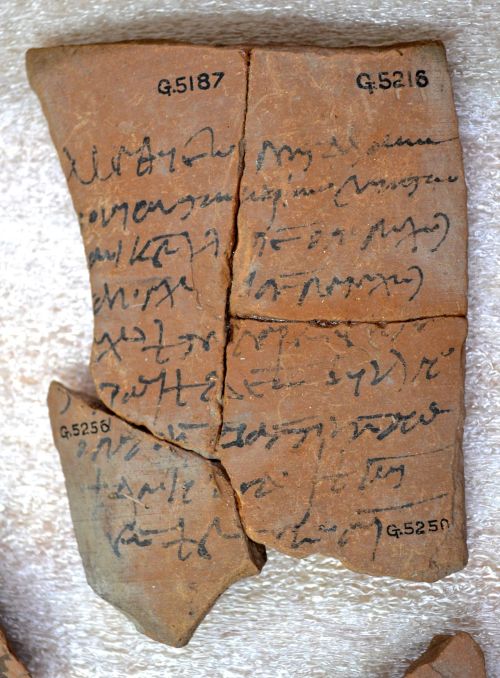ancientart:Ancient post-it notes!romkids:How often do you reach for a Post-It note? Maybe you’re mak
ancientart:Ancient post-it notes!romkids:How often do you reach for a Post-It note? Maybe you’re making that to do list, or figuring out your groceries. But you know, what if you lived BEFORE Post-It notes or scrap paper? What would you use then?In Thebes, where these examples are from, and across the Roman Empire, scraps of used and broken pottery would be used to scribble quick notes. These examples are called ostraka. Most of the ostraka that our conservators and curators are studying right now contain notes on taxes and granary receipts from the second century AD.The notes are written in Greek script. Kay Sunahara, ROM archaeologist studying these pieces, described the Greek langage at the time as, “the lingua franca of the Mediterranean”. Greek was the most frequently used written language, used to help bridge the gap between speakers of different languages, much like English today.The majority of these pieces we’re found and acquired in the early 1900’s by none other than ROM founder Charles T. Currelly.So how are these scrap pieces of pottery useful to archaeology today? Are grocery lists really that vaulabe? For archaeologists, ostraka provide them with a great deal of information about the people who left these notes in the first place. Information such as what people were eating, trading for, in trouble for, and the prices of things, give us a unique look into those who lived far before us, in this case well over a thousand years ago. Interestingly enough, it also shows us just how similar we are to those who lived long before. Everyone needs groceries, and a reminder letter, maybe from their mom, or from their husband, of what to get from the store.National Archaeology Day takes place on October 20th at the ROM and many other museums around the world! -- source link
#ancient world#everyday life#notes#archaeology#archaeological news#roman#pottery


